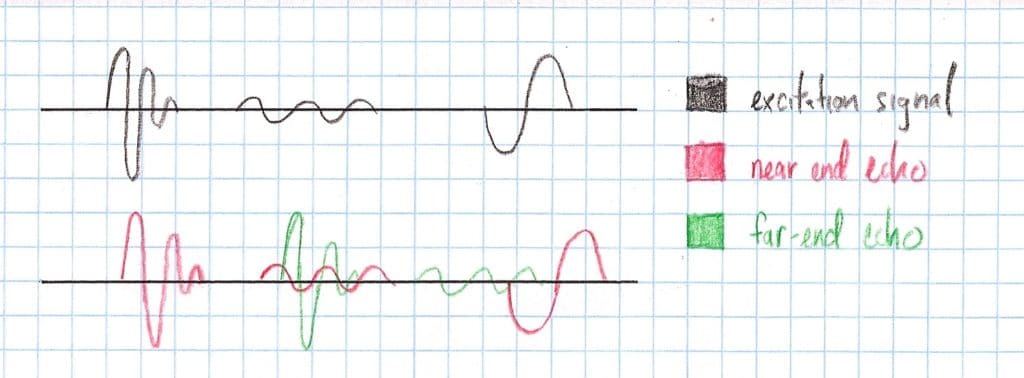A far-end echo canceller is incorporated into the near-end telephony device to cancel echoes in the signal received from the far-end along side the near-end echoes. The echo delay of near-end echoes is determinable and unchanging, unlike far-end echoes which are variable because the echoes may travel different network paths for different calls. Therefore, the far-end bulk echo delay must be computed for every new communication. The easiest way to measure the bulk echo delay is to find the delay that maximizes the cross-correlation between signal sent out and the echoes coming back.

There are a few challenges to far-end echo delay estimation. Since the echo location is unknown at the start of the call, the far-end echo canceller cannot actually cancel the echo until it knows where it is. The delay estimation must be done as fast as possible. Secondly, the search window for the far-end echo can be very large, ranging from 64ms up to as much as 1200ms. At 8kHz sampling rate, this means there are 9088 potential delay values. Although the delay needs to determined quickly, how often the estimation is performed needs to be limited such that the computational complexity doesn’t get too large. A third challenge to far-end delay estimation occurs when additional near-end echoes arrive during the estimation of the far-end echo. The figure below illustrates this scenario. The presence of an additional signal will lower the cross-correlation value, which can lead to inaccurate delay estimates. Therefore, before accepting a delay value, the cross-correlation must meet or exceed a threshold value.

VOCAL Technologies, Ltd. has developed a proprietary far-end echo delay estimation which quickly estimates the delay accurately in the presence of near-end while keeping the computational complexity low. Please contact us to learn more.